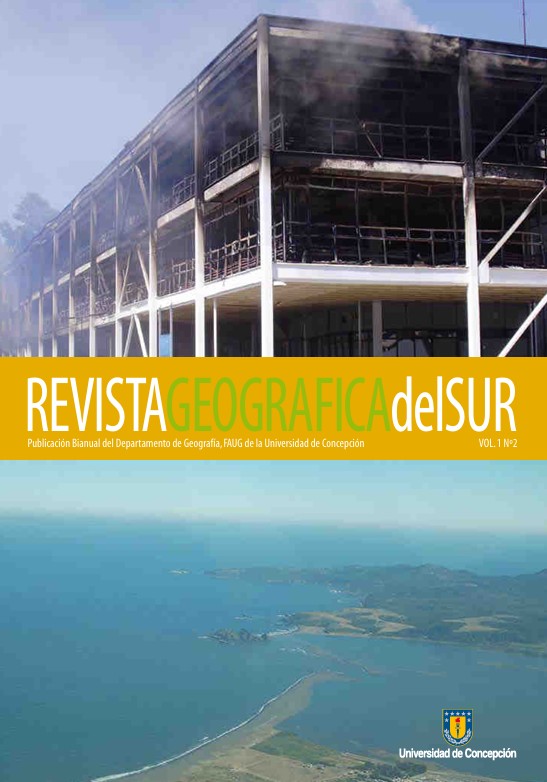Movimientos cosísmicos verticales y cambios geomorfológicos generados durante el terremoto Mw= 8,8 del 27 de febrero de 201 O en el centro-sur de Chile.
Keywords:
Earthquake, uplift, subsidenceAbstract
This work includes an analysis of vertical movements generated by the February 27th earthquake with more clear evidences in water level changes mainly marine, lacustrine, fluvial or underground. Such changes are response to coseismic uplift and subsidence and it determination permits a description of the earthquake and to estimate the plate movements. The big magnitude of the February 27 earthquake Mw=8,8 is enough to considerate it as mega earthquake and their characteristics are similar to the seismic sequence of may 21st and 22th moment magnitude Mw=9,5 that affected the area between Concepción and Taitao Península on southern Chile with length rupture of 1.000 km. Carlos Veyl, geologist of the Universidad de Concepción did one of the first research about the seismic phenomena associated to the 1960 earthquakes indicating the uplift and subsidence. Plafker and Savaje (1970) did a complete description of the relief changes associated to that earthquake. This work use a similar methodology to the two research cited considering markers of uplift and subsidence as marine abrasion platform, marine biota, terrestrial submerged vegetation and man made markers as dry / submerged docks that are consequence of apparent water level changes due to vertical movements of the ground. These observations are complemented by some geodetic measurements done with GPS.
Downloads
Published
How to Cite
Issue
Section
Copyright (c) 2025 Jorge Quezada, Edilia Jaque, Arturo Belmonte, Alfonso Fernández, Daniela Vásquez, Carolina Martínez

This work is licensed under a Creative Commons Attribution 4.0 International License.







